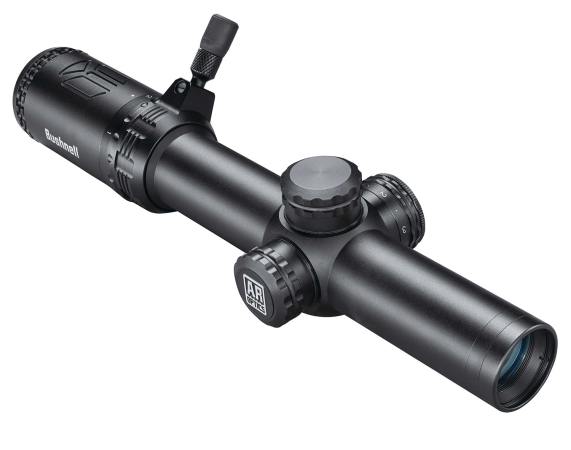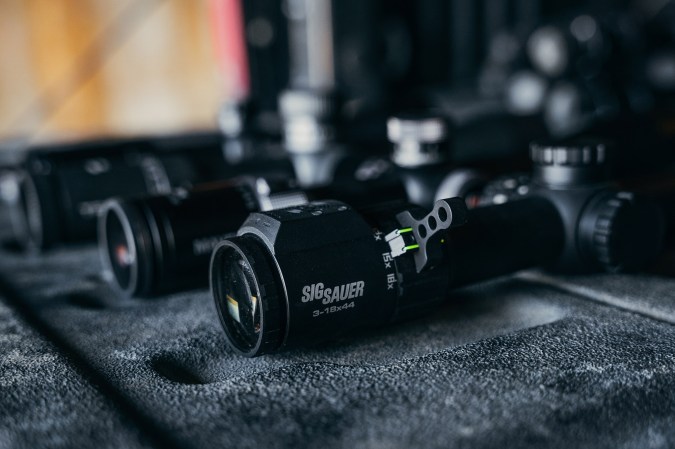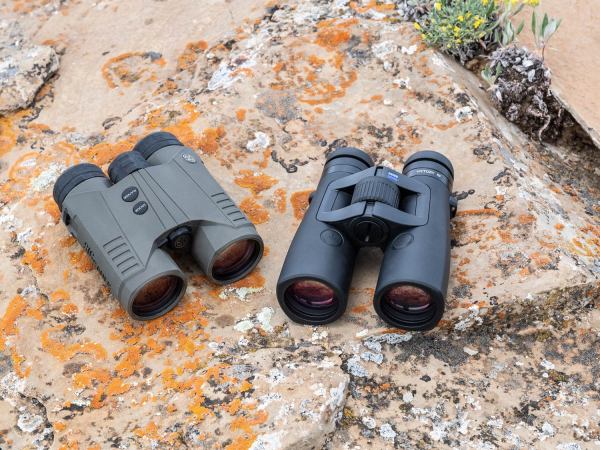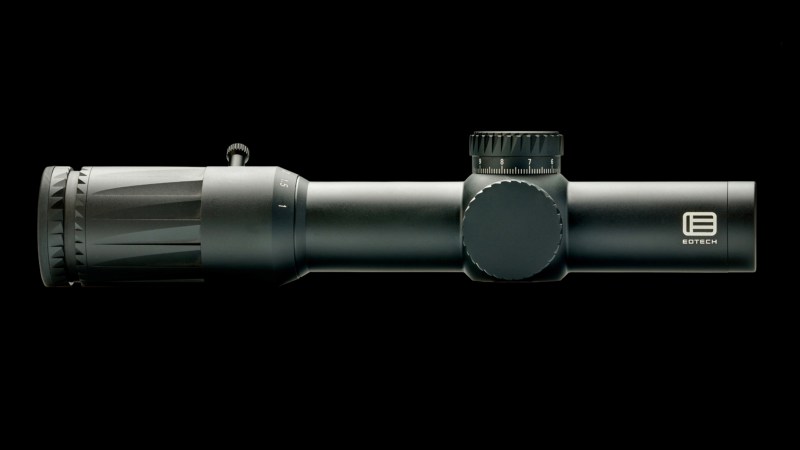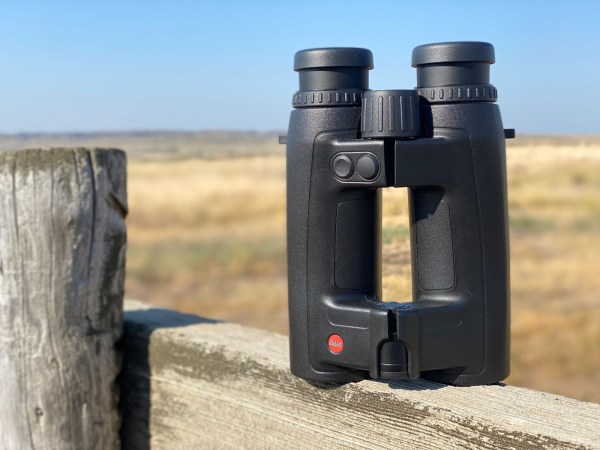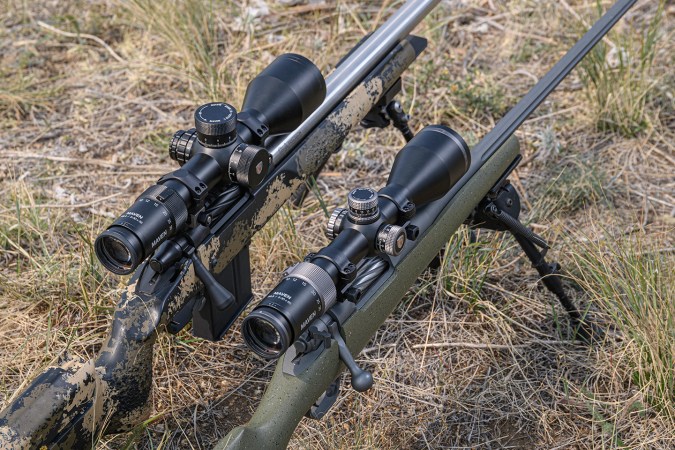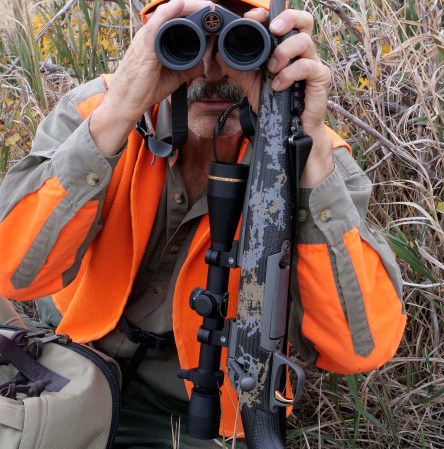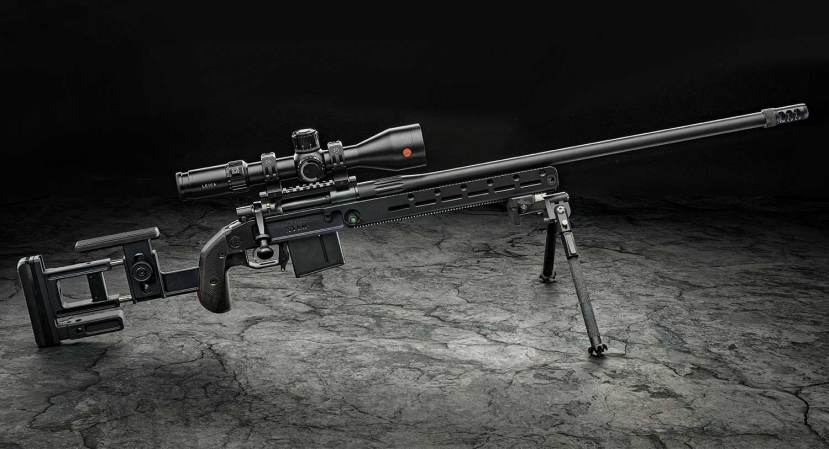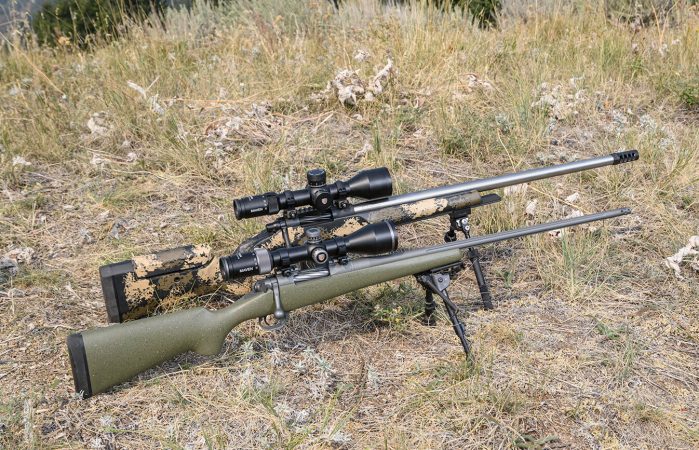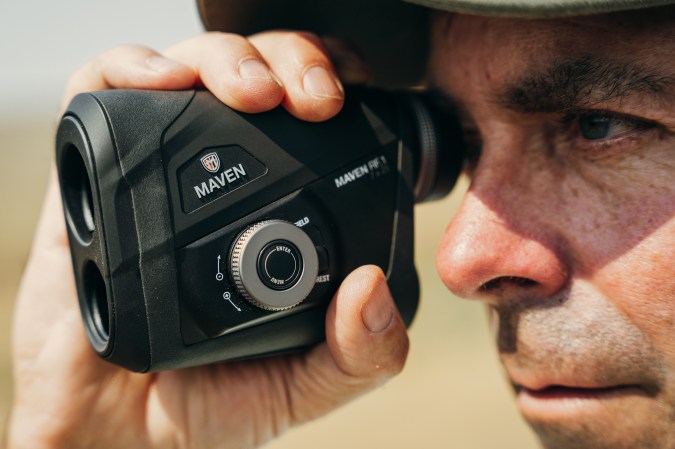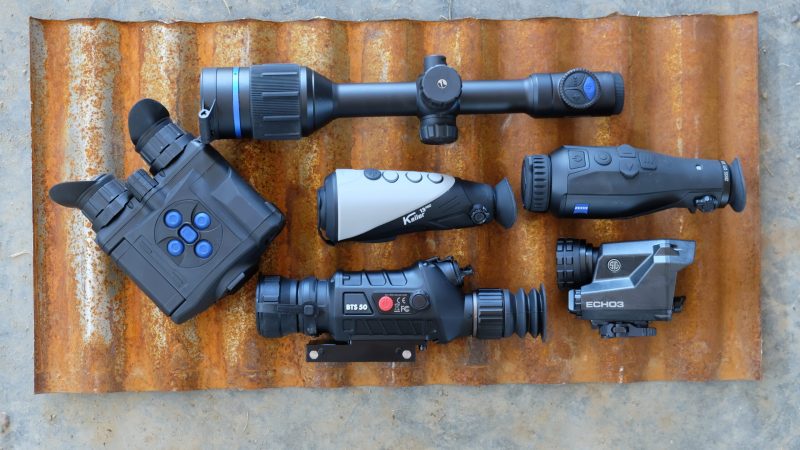We may earn revenue from the products available on this page and participate in affiliate programs. Learn More ›
The explosion of participation in long-range target shooting has spawned an entirely new category of riflescope. I know. I know. Old news. But to appreciate how deeply the precision-rifle movement has penetrated the optics industry, consider all the resources firms are pouring into riflescopes that really have only one job, to help shooters engage steel targets at extremely long ranges.
Not many years ago, these optics companies would pour those resources into a flagship binocular or spotting scope, or into a riflescope with super-premium glass that might pair with an heirloom rifle. It says a lot about the ascendance of practical shooting games that now these companies’ flagship products are precision scopes built on hulking 34mm tubes with first-plane reticles that only a handful of shooters will ever use as intended. But it’s the influence of these shooters that is moving the market.
A representative of one scope company told me that he gets more requests for “MIL/MIL” scopes—riflescopes that have both turrets and reticle tuned to milliradian values, than for any other configuration, including the venerable old 3-9×42. Late to the precision-shooting game, this company scrambled to produce a 34mm, first-plane milling scope, which because of the precision components required by precision shooters, is priced well above $1,500.
“We don’t sell a lot of those scopes, but it confirms to the customer who buys our second-tier scopes that we’re serious about serving shooters,” said the representative. “As a result, we sell a lot more products.”
Any shooter who has run a PRS course understands the difficulty of acquiring distant targets, then using all the tools of their riflescope—precisely dialing the distance and windage solution with finely calibrated turrets, or using the fine references in the reticle to hold over or hold off—to make consistent hits at targets well beyond 1,000 yards. That task is aided by shooters’ ability to precisely focus the image, use illumination to highlight the reticle against the background, and rely on excellent glass and coatings to resolve small targets at far-distant ranges.
A scope with all the attributes required by precision target shooters is often big, heavy, and overbuilt for more pedestrian tasks such as walk-about hunting and close-in target shooting. That’s the biggest reason that we divide scopes in the Outdoor Life optics test into two categories: Versatile Riflescopes that can be used for hunting as well as a wide variety of other target work, and Precision Riflescopes that are purpose-built for long-distance target games.
This year, we evaluated 13 precision scopes, and they are among the most sophisticated and capable optics we’ve tested. For many brands, these precision scopes are their flagship optics of the year.
For the rest of our Optics Test Reviews, click the links here:
- The 17 Best New Versatile Riflescopes Put to the Test
- The 9 Best New Hunting Binoculars Put to the Test
- The 8 Best New Spotting Scopes Put to the Test
1. Editor’s Choice: Leica PRS 5-30x56i
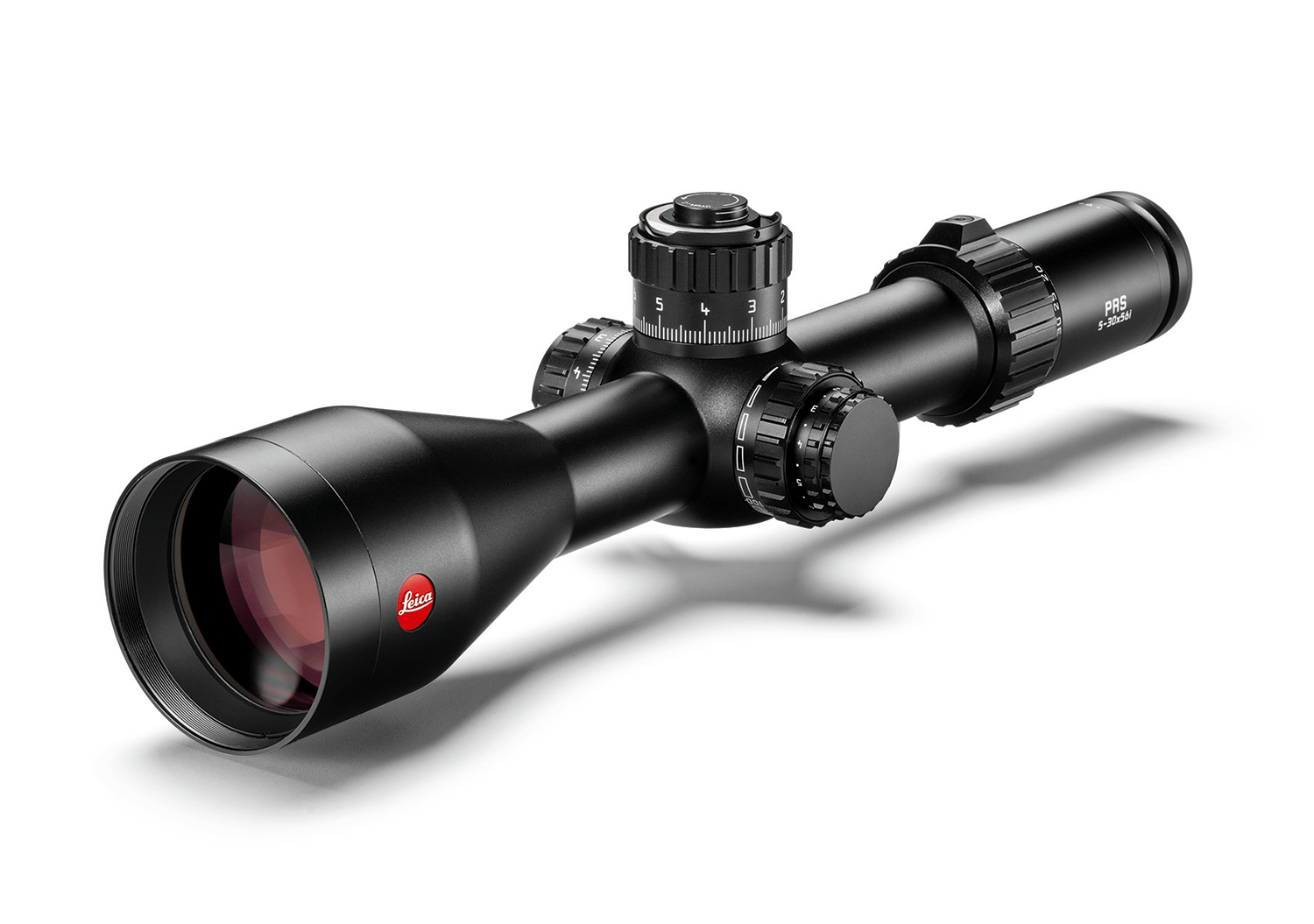
This is the world-class riflescope that we knew Leica was capable of delivering American shooters. The German firm’s reputation as a leading optics brand is confirmed annually by its excellent line of binoculars and spotting scopes. Its riflescopes, including the lustrous Magnus family, are bright and capable, but they’re generally configured for European hunters. With its PRS, Leica finally has a scope built for American shooters, and it’s a nearly perfect choice for engaging targets at extremely long ranges.
For starters, there’s the premium German glass and optical coatings that allowed the PRS to finish in second place in our low-light test and earn a top resolution score. We also ask testers to rate image quality subjectively, assessing how images look in various light conditions and against a wide variety of backgrounds. With the Leica, we asked testers to consider whether the glass is too good. In other words, is this overkill for a target scope, considering that the quality of the glass boosts the price of the PRS into the super-premium stratosphere. The test team, comprised of PRS shooters as well as hunters, concluded that the Leica’s glass is just as critical to engaging distant targets as the reticle and controls.
“I was able to discern small targets, and milling targets was much faster due to the fact that I could clearly see the edges of my targets at a distance,” says one tester.
Then there are the Leica’s tasty controls. The elevation turret, with 10 mils of travel for each revolution and 32 mils of total adjustment, turns with authority and precision, with just enough resistance between stops. Both turrets have smart tool-less zero-resetting functions that allow shooters to change zero stops in the field.
The illuminated first-plane reticle features an open aiming circle that allows for clean aiming but a full 6 mils of holdover and holdoff, even at 30X. Half the team liked the clarity of the modified Christmas-tree reticle, along with the combination of dots, hashes, and crosses to denote various wind holds. The other half wanted more than ½ mil subtensions. But all shooters noted the reticle’s utility at every magnification. That’s a testament to the clarity of the optics and the rich contrast of Leica’s reticle; the first-plane reticles in many precision scopes aren’t really useful at lower magnifications.
If we have a criticism, it’s that the parallax control is too stiff. Plus, we’d like to see additional references for moving targets on the horizontal reticle. While we winced at the price, it’s on par with premium precision scopes from other brands.
Finally, the test team raved about the velvety finish and handsome indexing on the 34mm Leica. As PRS gains popularity in Europe, Leica’s precision scope will compete well with Kahles and Schmidt & Bender, and given all the durable utility in this jewel of an optic, you can expect to see more Leicas at PRS matches on this side of the pond in the coming years.
2. Nightforce NX8 2.5-20×50
This may be the ultimate precision riflescope. Nightforce keeps perfecting the platform by exercising restraint but investing in key features to make you a better extreme-distance shooter.
As an example, this latest iteration of the venerable NX8 is built on a 30mm tube but contains an impressive 32 mils of elevation adjustment and 23 mils of adjustment in the capped windage turret. It contains a sweet two-color (red and green) illumination system contained within the parallax control that makes for a trim profile. And despite a relatively low magnification range, the NX8 has all the optical horsepower to reveal distant targets with precision and clarity, thanks to its premium Japanese glass. The Nightforce finished in second place in overall scoring, only a couple points behind the wondrous Leica PRS scope.
Lastly, this is a very tight package. The NX8 is only 12 inches long and weighs 28 ounces, and while we complained a bit about the stingy mounting dimensions, the 50mm objective lens and short throw of the Nightforce allow for low-profile mounting on AR and carbine platforms.
Nightforce delivered two different versions of the 2.5-20 NX8, one with its versatile MOAR reticle, and the other with the new TREMOR3 reticle from Horus. We tested the TREMOR3, largely because we’ve evaluated the MOAR in previous optics evaluations. A sophisticated milling reticle that is optimized for holdover and holdoff shooting, the TREMOR design takes some getting used to.
“It’s funny to see faces of shooters when they look at a TREMOR3 reticle for the first time,” one OL tester wrote. “The most common phrase is, ‘Wow, that’s busy!’ This reticle has it all: rangefinding, wind dots, and mover dots. But there is a steep learning curve—after all the reticle is taught to Marine and Army operators over a 3-day course—and that knowledge is perishable if the reticle is not used regularly.”
If you’re up for the task of learning the complicated geometry of the TREMOR3, then this is an excellent option. If you’d rather have a simpler, more versatile MOA-based reticle, then opt for the NX8 with Nightforce’s MOAR reticle. Either way, you’ll get the most reliable and positive turrets in the industry, legendary durability, and a ton of performance in a tight, bright package that we felt was priced very fairly.
3. Tract Toric UHD 4.5-30×56
Before I dive into the astonishing attributes of this extreme long-range riflescope, a bit of backstory. The principles of Tract, a direct-to-consumer brand, are alumni of Nikon’s sports optics division, which announced earlier this year that it was closing its riflescope division. Those of you who have used Nikon’s scopes know their buttery controls, shooter-friendly reticles and configurations, and their great value.
Well, all those qualities that were developed over the years at Nikon have their fullest expression in this remarkable precision scope. Let’s start with those controls. The magnification, parallax, illumination, and turret operation is like handling a well-made car. They turn with authority and precision, but without the extra effort that some over-tight scopes require. The glass is among the best in the test; the Japan-sourced Tract finished near the top in our low-light test and one evaluator noted the extremely vivid colors that the scope delivers to the eye.
The first-plane Christmas-tree style milling reticle is very intuitive, with elevation references rendered in hashes and windage holds expressed in a series of bold and unbolded dots. The 11-step illumination system allows for wonderfully dim or vividly bright full reticle illumination. The 34mm tube contains 30 MRAD of total internal adjustment, and the turret indexing is clear and precise. The elevation turret is tall as an oak tree, and that single element came up in every testers’ evaluation.
“The locking turrets can get hung up when pushing them down,” said one tester. “That elevation turret is a monster,” remarked another.
Still, the Tract turned in high scores in nearly every category, including our coveted Price/Value consideration. When we added all the scores up, we were both astonished and satisfied that the Toric Ultra HD finished in third place in the Precision Riflescopes field, only a couple points behind the remarkable Leica PRS and Nightforce NX8.
Not bad work for a couple of folks who have devoted their careers to building extremely capable, durable, and priced-right riflescopes, and who are happy to bypass retailers and deliver them right to your door.
4. Maven RS.4 5-30×56
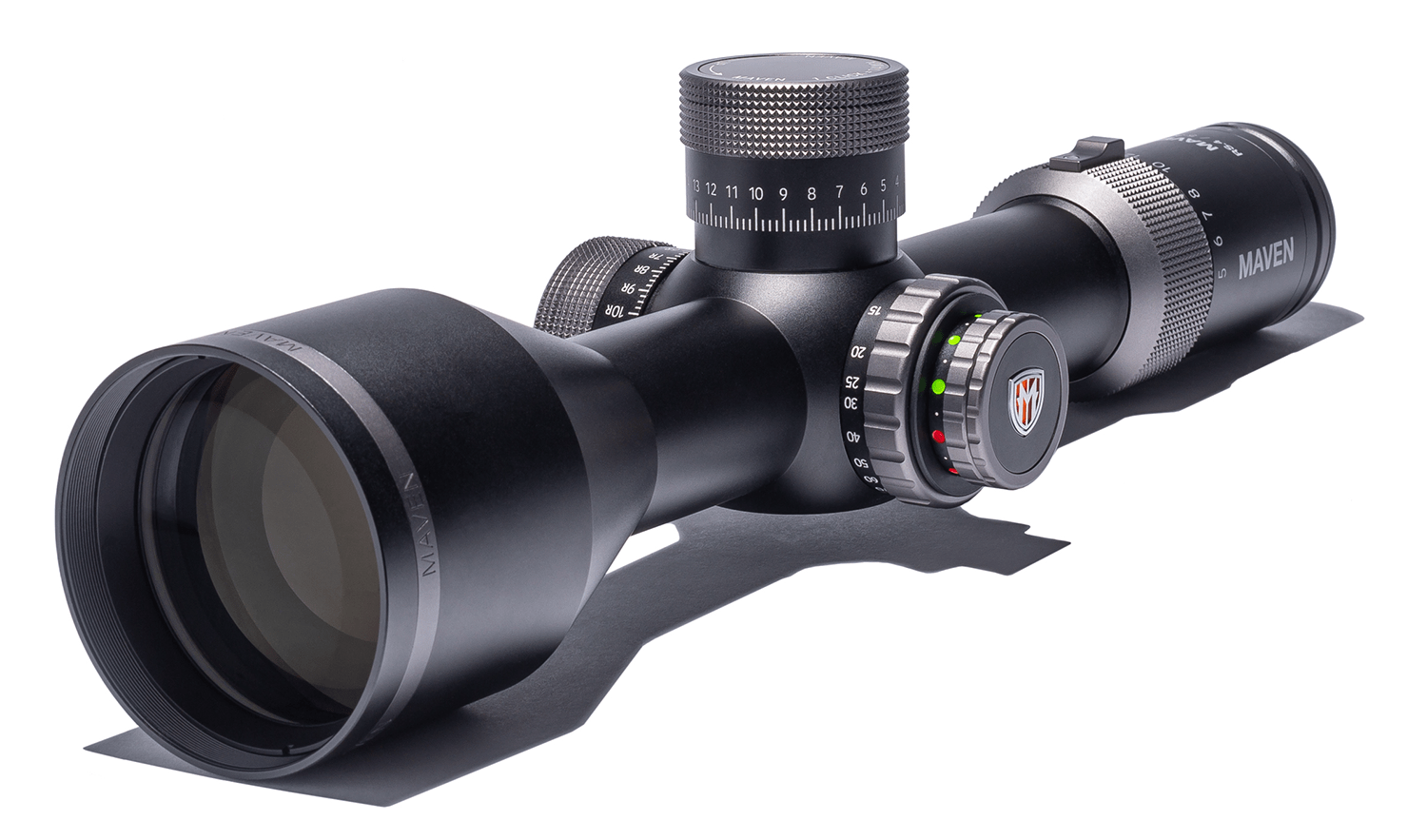
“Maven has outdone itself with this scope,” said one tester after he finished a round of ringing steel plates. “It has all the features and qualities the heavy hitters have to offer.”
Well, it should. The RS.4 is a welcome addition to the precision riflescope crowd, and shows this direct-to-consumer brand has been paying attention to attributes required by precision shooters.
The first-plane CFR-MIL reticle is a Christmas-tree style with excellent hashes and dots that enable both rangefinding and mover holds. At 10X, shooters have 12 mils of visibility on both the elevation and windage axes, but unlike the TREMOR series of reticles, there’s plenty of room in the image plane for target acquisition. If we have a complaint, it’s that many shooters will want more than 1 mil of wind holds, but the lack of half-mil dots gives the reticle an open, airy look. At 30X, shooters have 5 mils of wind and elevation holds in the image, and the reticle remains richly black and visible against most backgrounds.
The oversized turrets turn with authority and precision and deliver 10 mils of adjustment per revolution. We were able to milk out 32 mils of elevation adjustment, a little less than advertised, but still plenty of range for most shooters. The Maven’s mechanical zero stop (it’s accessed below a relatively hidden threaded cap on both turrets) is strong, simple, and easy to set with a small Allen wrench. The pewter-colored knurling on all turning surfaces is excellent, and makes for good grip and positive controls, though the test team was unanimous in complaining that the parallax knob required a torque wrench to turn. The RS.4 has an excellent illumination system that lights up the entire reticle in various intensities of either red or green.
The Japanese-sourced glass is good, though we were a little underwhelmed with its middle-of-the-pack low-light performance. But the Maven’s coatings are marvelous, and all testers reported excellent color rendition and a bright, high-contrast image.
In all, this is a great precision scope from a brand that has previously contented itself with optics more configured for hunting than target work. Based on this excellent start, we expect to see more Mavens on PRS rifles in coming years.
5. Bushnell Elite Tactical DMRii Pro 3.5-21×50

Back in 2012, when the first generation of this venerable precision optic was introduced, Hurricane Sandy pummeled the East Coast, Barack Obama was elected president, and long-distance precision shooting was in its infancy.
A lot has happened in the intervening eight years, but this extremely durable and capable Bushnell scope is still ringing distant steel plates and charming shooters with its responsive and precise controls.
The main update to the Elite Tactical is the addition of the first-plane, non-illuminated G3 reticle, designed by GA Precision and George Gardner. It enhances the G2 reticle by adding simple mover references along the horizontal stadia and 4-mil windage holds down the vertical stadia. At 21X, shooters have 9 mils of holdover and holdoff references in the image plane, but at 12X shooters (and hunters!) have the entire reticle at their disposal, with 15 mils of holdover and a decent amount of windage references. It’s this clean and open design that makes the G3 the choice of shooters who want a lot of target visibility but choose to dial their shooting solution.
The platter-sized exposed turrets are among the best in the test, and make dialing a joy, though one tester noted that the sharp knurling “might leave some skin on the turrets if turned too quickly.” The turrets offer 10 mils of adjustment per revolution and a total of 30 mils of elevation and 20 mils of windage travel. Bushnell’s “Revlimiter” zero stop is fast and easy to set.
We liked the Japanese-sourced glass. The Bushnell turned in a decent low-light score, but wowed testers with an aberration-free and extremely bright and contrasty image.
The entire package is tight and compact, measuring just 13 inches in length with ample mounting dimensions on its 34mm tube. One tester felt that the weight—a very hefty 37 ounces (2.3 pounds) should be mentioned, because while the build is certainly durable, this is a very heavy scope.
Still, with Bushnell’s excellent warranty and extremely accessible price (we found this for sale at a street price of $1,200), this is a bombproof, tight, and versatile choice for shooters who want a precision scope for a variety of purposes.
6. SIG SIERRA6 BDX 5-30×56

We’ve been eagerly awaiting the arrival of a precision-styled smart scope from SIG since the inaugural BDX system swept us off our feet two years ago. Back in 2018, we gave the SIERRA3 both our Editor’s Choice and Great Buy award for its innovative operation—the scope communicates via Bluetooth with a laser rangefinder, which gets its prompts in turn from a mobile app—and accessible price.
The SIERRA6, assembled in the Philippines, has many of those same attributes of its predecessor, which was configured more for hunting than target shooting. The SIERRA6 can be linked to SIG’s excellent mobile app as well as to a “smart” rangefinder, but unlike the initial BDX, this version can also operate as a standard precision scope, allowing shooters to utilize any of a number of ballistics profiles to match their bullet dynamics. The 34mm scope can also be used with a BDX-equipped rangefinder to use custom ballistics curves from Applied Ballistics in the field, even when out of range of phone service.
Additionally, the scope is plenty useable even when the battery goes dead. The MOA-based, Christmas-tree style GEN II BDX-R2 reticle in the first focal plane has a decent amount of references, though we had to lower the magnification to engage targets smaller than about 2 MOA at distances beyond 1,000 yards. The capped turrets turn with authority and unlock 71.75 MOA of both elevation and windage adjustment. We liked the 10-step illumination, as well as SIG’s responsive LevelPlex anti-cant indicator.
When connected to the BDX system, the scope swaps seamlessly between rifles. We shot this on .22 Long Rifle, .223 Rem., 6.5 Creedmoor, and .300 Win Mag rifles, and the scope tracked the respective ballistics quickly and precisely. If we have quibbles it’s that the BDX system is relatively slow for competition. In order to engage targets, the shooter must first range the distance, then receive the ballistic solution, and make the holdover adjustment before firing. Compared with a shooter who either holds for distance and wind or can make fast turret adjustments, this is a slow system. Without the BDX compatibility to help with holds, we wanted more references in the reticle. We also wanted a zero stop; otherwise, you have to be cognizant of dialing, in order to be sure to return the turret to its original zero.
But as a versatile scope, and one that can be used with the full array of BDX-compatible components or by itself, the SIERRA6 is a very good effort. The SIG’s glass is excellent, the controls both precise and positive, and the durability among the best in the test.
7. Athlon Cronus BTR 4.5-29×56
Considering that savvy shoppers can find this excellent precision scope at a street price of around $1,200, and also considering that it can do almost everything a scope costing twice the price can do, there’s no good reason to not consider this MOA-based optic for your precision rifle.
The Japanese-made Cronus BTR won our low-light test, edging out a strong field of fellow 56mm scopes, including the world-beating Leica PRS. Its mechanics are solid and positive, though we suggest that the hard-turning magnification ring could benefit from a throw lever. The turrets, tuned to ¼ MOA clicks, are among the best in the field, turn with smooth authority. Mounting dimensions on the 34mm tube are generous, and the color rendition of the glass and coatings is remarkable.
The tactile-style elevation turret unlocks 110 MOA of total adjustment; the windage knob has 65 MOA of adjustment. Turret indexing is a little busy, and we wish the 10-intensity illumination also fired up the windage dots, along with the main reticle stadia. While we’re handing out demerits, we’d like to see just a little more of the first-plane reticle at the highest powers. At 30X, you get 20MOA of windage and elevation, enough to engage distant targets as long as you dial dope, but holdover shooters will want a little more references, though they get 30MOA of holds at 20X.
But those are honestly minor quibbles for a scope that handles almost every precision task with ease and authority. Athlon has a winner for shooters looking for an MOA-based scope for the Production Class division at PRS matches, but which can handle most other shooting games. There’s a ton of utility here for the money.
8. Steiner M7Xi with IFS 4-28×56

Many of the shooters who compete in Precision Rifle Series matches, or any of the other long-distance shooting games that are currently in vogue, daydream about taking their shooting talents to the battlefield. And a healthy proportion of PRS shooters got their foundation in long-distance shooting while wearing a military uniform.
While the reticles, controls, and even mental capacity to compute the crazy amount of variables that go into consistently making long shots have military application, shooting steel plates is vastly different from shooting at humans, and the scopes used in civilian games generally lack the purpose-driven attributes that military gear must have in order to function at a high level.
Steiner’s M7Xi riflescope is one of those military-grade optics that is going the other direction. Developed for military snipers, the 34mm scope has a crazy amount of very specific attributes that make it useful on the battlefield but a little too much for steel ranges.
Let’s start with the reticle. Our model contained a first-plane MSR2 reticle, designed by FinnAccuracy. At the lowest magnifications, shooters have a whopping 50 mils of elevation hold in the scope, but as you increase power, the full capability of the reticle is revealed. You have all kinds of mover-target references, a man-sized rangefinding subreticle, and a milling square that can be used to determine either the size or distance of targets. Designed for an operator who shoots this specific reticle day in and day out, the more we shot it the more we liked it. But it has a steep learning curve.
Our M7Xi came with Steiner’s Intelligent Firing Module attached to the eyepiece. This is a snazzy piece of technology, and connects via Bluetooth to a mobile-phone app that allows shooters to customize an internal display for various loads and bullet dynamics. The module also controls things like the scope’s zero stop and various holds.
We loaded a wide variety of bullets and cartridges into the app, from match .223 loads to the devastating .338 Lapua, and the IFM tracked nicely with each addition. But the module is also a battery hog, and we had to suspend a number of shooting sessions to replace the AA in the module.
The German glass is great. The controls among the best in the test. But the consensus of the test team is that his scope is simply too specialized for most steel-plate shooters.
“I appreciate all the features, but this is a scope that requires regular use to stay familiar with its operation,” wrote one tester. “I wanted to give it higher scores, because it does everything pretty well, but it’s simply too specialized.”
With its exceptionally focused M7Xi, Steiner has done what I would have thought impossible: made a precision scope with just a bit too much precision.
9. Horus HoVR 5-20×50
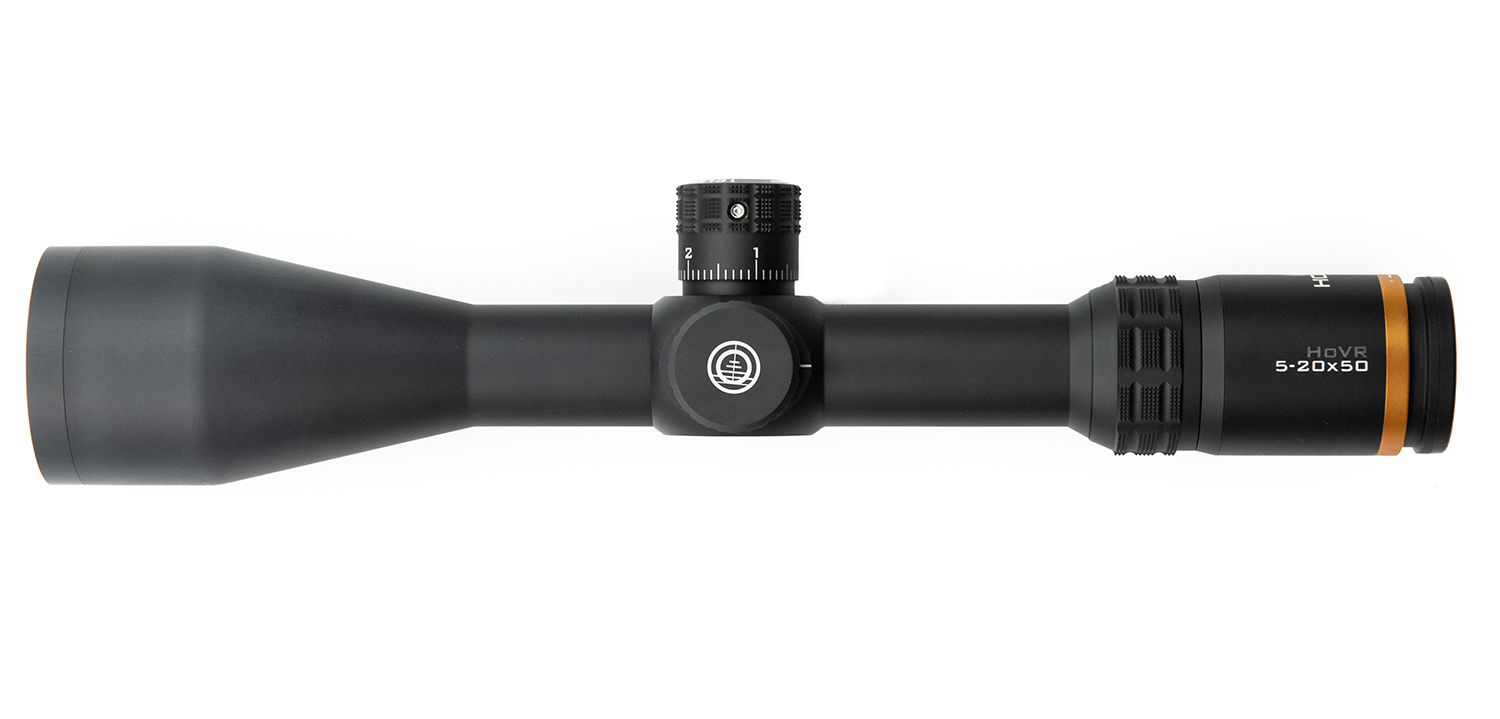
While it’s a newcomer to our optics test, the name Horus is certainly well-established in the world of precision shooting. Horus developed many of the first and best holdover milling reticles in the business, and designs such as the H59 and TREMOR2 have connected shooters with distant steel plates for over a decade. The company is one of several that’s bypassing retail stores and offering direct-to-consumer optics. This freshman effort is good, and is a great expression of Horus’s long experience in the precision-shooting world.
Let’s start with a few deficiencies, including its optics. Testers noted that the Japan-sourced glass seems slightly dark compared with its peers. The HoVR finished in the upper middle of the pack in low-light performance but turned in a disappointing resolution score. Testers wanted more than 19 mils of adjustment in the elevation turret, and most evaluators felt that the scope was a bit overpriced.
Now, for some context. Some of the limited turret adjustment range can be explained by the Horus’s 30mm tube, but this is a first-plane aiming system that’s more reliant on holdover than on dialing aiming solutions. The HoVR contains the relatively new TREMOR3 reticle, and like most Horus reticles, it’s designed for very precise holdover and holdoff aiming. The TREMOR family isn’t for everyone; they are extremely detailed and complicated reticles defined by a series of hashes and different-sized dots—one tester noted that the U.S. military sends operators to a 3-day course to learn how to properly use the reticle’s features—and can be intimidating for casual shooters.
Even with that background, we wanted a bit more turret adjustment. We also noted that the exposed elevation turret turned a bit too easily; we liked the positive clicks of the capped windage turret better. The HoVR is non-illuminated, but the modified Christmas-tree style of the reticle showed up beautifully against most backgrounds and at most magnifications. We liked the addition of a ranging bar in the TREMOR3 reticle as well as the quick and simple zero reset function of the elevation turret. The controls, including power ring, parallax knob, and turrets, turn nicely and with precision and the 50mm objective allows for low-profile mounting.
With its HoVR submission, Horus also submitted an excellent weather meter and a very good 2,000-meter rangefinder that has a built-in Bluetooth receiver to communicate with mobile ballistic apps.
We’re eager to see the next generations of Horus’s optics. The freshman effort is solid, but leaves room for improvement.
10. Great Buy: Brownells MPO 5-25×56

A newcomer to our optics test, firearms-supplier Brownells has delivered a very useful and precise scope that offers so much utility for an appealing price that we bestowed this year’s Great Buy award on the MPO.
For $1,000 you get a scope that will allow shooters to compete not only in PRS matches, but to engage distant targets at any number of shooting disciplines. The first-plane reticle was the subject of some great debate among testers. Called the N-OMR, or Non-Obscuring Milling Reticle, half the test team felt that it didn’t live up to its name.
“The reticle is a little thick for my licking, and at full magnification, it is huge,” said one evaluator, who noted that at 25X, the double-line main stadia is nearly .25 mils thick. Other testers, though, noted that the N-OMR allows for very fast target acquisition and precise bullet placement. “The double line is hard to see through, but it lets me put my target on one side or the other of the line and it makes holds easy to see. For me, the best reticle visibility is at 14X.”
The reticle’s references can be tuned to your specific bullet dynamics through the Strelok ballistic app, providing the opportunity to customize holds. The MPO’s 6-step red illumination lights up the entire reticle, which aids visibility in both low-light and bright-sunlight conditions.
We found the turrets to be too tinny and coarse, though they tracked our 10-minute shooting grid perfectly and returned precisely to the original zero. The turrets delivers 10 mils of elevation adjustment per revolution, but yield only 20 mils—two revolutions—in all, making aiming a decent hybrid of dialing and holding to reach the farthest targets. The zero stops are solid, simple, and easy to use.
Image quality from the Japanese-sourced glass is very good for the price. The MPO settled in the middle of the field in terms of low-light and resolution scoring, and we liked the ample mounting dimensions on the 34mm tube, and all testers praised the to-hell-and-back durability of the Brownell’s build.
While the MPO didn’t wow us in any single category, it delivered good performance across the board, and the test team figured that, given the very accessible price, it would make a great choice for a beginning precision shooter or anyone looking for a ton of value in a smart, capable package.
11. Athlon Midas TAC 5-25×56

Any precision shooter on a budget should take a hard look at this scope, which one tester suggested would make an excellent addition to a rimfire rifle competing in National Rifle League .22 matches.
The Midas TAC is essentially a price-point sister to Athlon’s excellent Cronus BTR precision scope. While the Cronus is build around premium Japanese glass, the Midas is sourced in China, and testers noticed a significant reduction in optical quality. The Midas finished near the bottom of both low-light and resolution testing, and testers noted a relatively dim image that blurred near the edges.
The non-illuminated MOA-based reticle is pretty simple but effective, with 40 MOA of windage and elevation holds visible at 15X and 26 MOA visible at 25X. The open aiming point is a nice feature, along with the clean design of the Christmas-tree style reticle.
The turrets could use some work, though. One tester said that the sharp, flinty clicks of the turrets felt to him “like running my fingers over a fine-toothed comb.” We also recorded problems with turret tracking, especially at the upper end of the adjustment range. However, considering that few shooters will ever run their turret out to 80 MOA, this is not a fatal flaw of the design. The zero stop is easy to use and reset, and we loved the butter-smooth operation of the parallax dial.
Overall, this is a great option for a price-conscious precision shooter, and considering that the Midas is covered by Athlon’s excellent warranty and reputation for durability, it’s a good first rung on the ladder to a long relationship with precision shooting.
Read Next: 10 Tips to Help You Shoot Like a Long-Range Sniper
12. Hawke Frontier FFP 5-25×56

As the market fills with more scopes built expressly for shooters competing in Precision Rifle Series matches, the amount of variety in our Precision Riflescope category has diminished. We no longer see many first-plane systems tuned to MOA adjustments. Instead, most are calibrated in milliradian increments. Similarly, we rarely see 30mm tubes in this category, as scopes bulk up on 34 and larger tubes, which provide shooters more reticle adjustment range.
And the reticles themselves are starting to look alike, based around various hash-and-dot geometry with references spaced every .1 or .2 MRAD. Hawke’s nimble Frontier FFP doesn’t easily fit the PRS mold, because it has so many attributes that make it a capable scope for hunting and other target games. But because it competes against scopes that do their single job very well, the versatile Hawke was probably punished a bit on scoring.
Testers rated the Chinese-made Frontier FFP near the bottom of the field, partly because of disappointing optics, but mostly because its Christmas-tree style “Mil Pro” reticle lacks the thicket of references that adorn most precision reticles.
“The reticle is very intuitive and clean,” notes one tester. “The only downside is the fact that its windage marks are mainly .5 mils. I would have a hard time milling a target with this reticle out past 500 yards.” Another tester noted that its turret tracking was slightly off. Still other testers felt that the 30mm scope’s relatively light weight—24.8 ounces—wouldn’t handle the pounding of a full PRS season.
But all of those perceived shortcomings can also be considered attributes. The scope’s trim weight makes it a good match for a long-distance hunting rifle. The relatively sparse reticle creates plenty of space for viewing your target, whether it’s a distant deer or a steel plate. The Frontier FFP’s ample mounting dimensions make it a good fit for a wide variety of rifle actions.
Testers were unanimous that the Hawke’s patented Zero Lock’N’Stop elevation turret was one of the easiest and smartest zero stops in the test. The pull-to-turn turrets move smartly if a little too easily. And testers loved the fully illuminated reticle, with six intensity settings.
The price is also attractive, especially considering all the innovation and versatility in this package, along with excellent scope caps and a finely rendered throw lever on the magnification ring. Score notwithstanding, this is an excellent choice for a hunter looking for a capable long-range scope or a target shooter who wants to combine adequate holdover and holdoff references with turret dialing to reach a shooting solution.
13. Riton X7 Conquer 3-24×56

New scopes have a tough time breaking into the precision shooting realm. The standards of the space—represented by Nightforce, Vortex, Kahles, and the like—have built a following around their purpose-driven reticles and precise controls. Happily, we’re seeing more precision-shooting newcomers every year, and Riton is a great example of how they are stealing market share with innovative reticles and other tactical features.
Riton’s 34mm X7 Conquer features a first-plane ODIN reticle, defined by a bold obelisk as its centerpiece. At lower magnifications, this design works well as a fast-acquisition aiming point, especially when it fired by its excellent illumination. But at powers above about 16X, we found the reticle too bold for long-range precision work. As for that illumination, we found that we needed it in just about every light condition, because the reticle has relatively poor contrast, despite the Japanese-sourced glass.
Testers, perhaps spoiled by the deluxe turrets of many Precision Riflescope submissions, rated the Riton controls as coarse. One tester noted a distinct difference between the positivity of the elevation turret and the tinny clicks of the windage turret. And another noted some deficiencies in the glass, with peripheral blurring at 24X and some washed-out color rendition. And every tester struggled to turn the extremely stiff parallax dial.
Those are hardly fatal flaws. This is a very useful precision scope that capably engaged targets well past 1,000 yards. But most testers noted that while they dispatched larger targets at middle distances with ease, they struggled with the Riton to consistently ring those maddeningly small and mirage-prone plates past about 1,200 yards. And testers felt that the scope’s price was a bit out of line with its performance.





